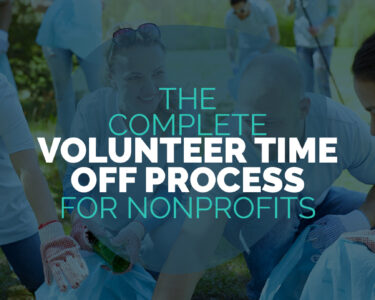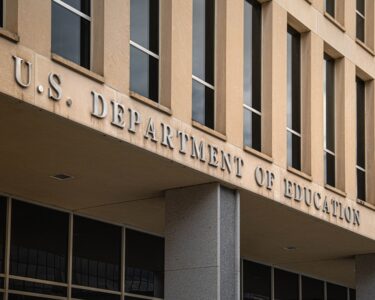Nonprofit organizations are in a state of crisis: facing safety, legal, and funding threats, as documented in the Center for Effective Philanthropy’s most recent “State of Nonprofits” report, which reveals nonprofit leaders are finding it difficult to pursue their missions in the current environment.
Philanthropy must match the urgency of the moment and the bravery of nonprofit partners who are on the streets, in detention, and struggling to serve communities. We have welcomed statements from funders defending the right to give. Speaking up is key. The vital next step is action.
We are a diverse group of regional, national, and international funders with differing funding areas, but a shared sense of responsibility to recommit to our missions and protect civil society.
We do not seek to dictate what other funders should do, but because we are such a diverse group, it is our hope that other grantmakers will see themselves in our stories and consider actions they can take right now to challenge illegal and unjustified attacks on civil society. We also seek to share our understanding of how staff and boards must come together to meet this moment.
In that spirit, we offer some possibilities that members of this group have explored for effective funder actions in response to the current crisis facing nonprofits and civil society more broadly.
1. Provide Rapid Response Grants
At the beginning of this year the World Education Services’ (WES) Mariam Assefa Fund, awarded 36 $20,000 general operating support grants to immigrant-serving organizations. Grantees used the funds for know-your-rights training, legal support, and physical and personal safety. Making these grants so quickly enabled the WES team to better understand the challenges facing grassroots and frontline organizations and make the case for increased resources to support additional partners.
Moving quickly may require changing governance. For example, last June the Foundation for Child Development’s Board shifted grantmaking authority to staff in order to award $750,000 in rapid grants in anticipation of increased grantee need. For some funders these changes may be part of an emergency response. For others, they may accelerate, or codify, governance changes that are already under consideration.
2. Increasing, Accelerating, and Preparing for More Support
The Scherman Foundation has made a commitment to increase payout to 10 percent, double the required five percent for private foundations. This two-year commitment will add $10 million to their giving.
The additional funding will bolster current grantees and support innovation and sustainability in the community organizing and movement building field. By structuring this as a two-year commitment, Scherman is able to make a significant contribution in this moment, but they are not significantly reducing their options over the long-term: the spending power of their endowment will even out over time.
The New York Foundation has also continued its increased payout and paid out some grants earlier in the year. With grantees on staggered grant schedules, it offered the option to receive payments in January, which was particularly helpful for organizations navigating delayed government contracts and anticipated federal cuts. They are also developing a strategic reserve policy that allows for greater responsiveness when markets are down and needs from grantees are high.
3. Support Beyond the Grant Check
While grants are the coin of the philanthropic realm, funders are stepping up to support grantees in many other ways. The Robert Sterling Clark Foundation has funded a resource bank for grantees that enables nonprofits to find support for finance planning, coaching, and legal counsel.
The Foundation for Child Development has funded third-party support to enhance grantees’ access to services such as digital security, crisis communications, physical safety and security, legal needs, and psychological safety, as well as doxing-prevention services for prominent leaders.
4. Align Operating Spending and Endowment With Values
While most funders are seeking to maximize their grantmaking, don’t overlook your operating expenses and endowments as places to align with your values and achieve increased impact. The J.M. Kaplan Fund affirmed its contracts with like-minded vendors and partners, such as its legal counsel, which had recently filed a brief in support of another firm challenging a punitive executive order.
The Scherman Foundation and New York Foundation have also transitioned to a more mission-aligned endowment. The New York Foundation’s mission-aligned investing includes a carveout for local catalytic investments in community-controlled development and inclusive economies, reflecting its commitment to using every tool to build community power just as its grantees do. Leverage your full range of assets and deploy relationships toward your mission and values.
5. Simplify Processes
Reducing philanthropic bureaucracy can help grantees focus on their immediate needs. For example, the Robert Sterling Clark Foundation and New York Foundation accept applications written for other funders and use oral reporting (which they believe provides better, more open information).
For several of us, these changes are part of a long-term commitment to trust-based philanthropy in both funder-grantee and board-staff relationships. That’s a direction we encourage for others, but it is not required, especially if permanent changes feel too big of a leap.
As with payout and governance changes, it is possible to take actions now that don’t require a complete change in your philanthropic model. Think of it as a way to test out new approaches: Funders often encourage grantees to innovate and experiment; this moment is our opportunity to do the same.
Learning From the Past and Planning for the Future
Whether these changes are temporary, or permanent, or temp-to-perm, they must be anchored in consistent values, planning, and relationship building across your organization.
Many of these approaches may sound familiar from five years ago when funders retooled their work in response to the COVID-19 pandemic and George Floyd’s murder. And indeed, for many of us, the actions taken this year were built on prior learning.
However, it is easier to be responsive in the moment if there is a shared understanding between board and staff of long-term goals. The Foundation for Child Development has been thinking deeply about risk and using a structure of concentric circles, with the kids they seek to serve in the center, nonprofit and university-based grantees and government agencies one circle out, and then the foundation itself. Each of these rings are interconnected but the rubric helps to prioritize where and how to respond to crisis.
Finally, it merits repeating that relationships with grantees and boards are key. Listen to grantees telling you what they need. The JM Kaplan Fund reached out to its more vulnerable grantees to ensure they were comfortable with how the Fund’s website mentions their organizations.
All of us have been able to have the necessary conversations and take these actions on the basis of trust between board, staff, and grantees. It is important to invest in these relationships over time — you can’t just flip a switch. There should be room for dissenting voices while still moving forward together.
With an anchor in relationship-building and long-term planning connected to values, taking the leap to respond quickly and bravely to support nonprofits and communities will be easier. We hope that other funders will see themselves in our stories and join us in this work with confidence and courage. You don’t need to do everything, but we urge you to do something. The greater risk is inaction.
Vivian Tseng is president and CEO of the Foundation for Child Development. Philip Li is president and CEO of the Robert Sterling Clark Foundation. Monica Munn is chief social impact officer at World Education Services. Mike Pratt is president and CEO of the Scherman Foundation. Julia Bator is executive director of the J.M. Kaplan Fund. Rickke Mananzala is president of the New York Foundation.
👇Follow more 👇
👉 bdphone.com
👉 ultractivation.com
👉 trainingreferral.com
👉 shaplafood.com
👉 bangladeshi.help
👉 www.forexdhaka.com
👉 uncommunication.com
👉 ultra-sim.com
👉 forexdhaka.com
👉 ultrafxfund.com
👉 bdphoneonline.com
👉 dailyadvice.us




